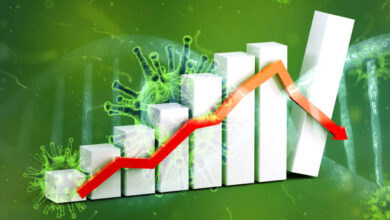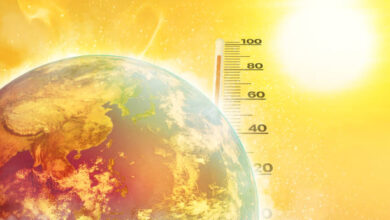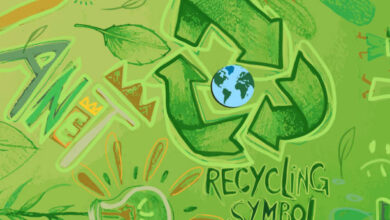
The unprecedented acceleration of global warming has far-reaching effects that touch every corner of the earth and aspect of human life. One of the most significant consequences, often underestimated, is its impact on our food. From the fields of grains to the ocean’s bounty, global warming has the potential to drastically change what we eat, how we eat it, and even if we can eat it. The ripple effect of global warming is indeed affecting our food in ways we are only beginning to comprehend.
Understanding the Link Between Global Warming and Food Security
To grasp the connection between global warming and food security, let’s first decode these two terms. Picture global warming as a feverish Earth, where rising temperatures are symptoms of an ailing planet, mostly due to human activities. This fever alters weather patterns, escalates sea levels, and brings about more frequent extreme weather episodes.
Food security, meanwhile, is like the grocery list for our global family. It’s about having enough nutritious food available for everyone, and ensuring that people can easily access it. Now, imagine global warming stumbling into this grocery list, changing what’s available, and where, when and how we can get it. You see, global warming meddles with agricultural productivity, the health of our oceans, and the livelihoods of those who bring food to our tables – the farmers. This meddling can toss our grocery list into disarray, creating a precarious ripple effect on food security.
Consider this, a warmer Earth doesn’t just mean toasty summer days, it impacts how our food grows, where it can grow, and when. This translates to less stable food sources and potentially higher prices at the checkout. By understanding this link, we can better navigate the challenges ahead, addressing food security in a warming world.
The Impact of Rising Temperatures on Crop Yield and Food Security
As the mercury climbs higher on our planet’s thermometer, most crops don’t thrive; they barely survive. Picture a parched cornfield under the scorching summer sun – not the ideal cradle for flourishing crops, right? Rising temperatures are like an invisible brute that can rough up the cellular structure of plant tissues, put a damper on the vital process of photosynthesis, and end up playing spoilsport to the growth and bounty of our crops.
This stifling heat can enact a domino effect that runs from the farm to your dinner plate. Lower crop yield could push food prices to dizzying heights, making it increasingly challenging for households to get their hands on staple foods. To bring this to life with some numbers – studies suggest that with every degree Celsius rise in temperature, we could see a chilling decrease of up to 10% in yields of wheat, rice, and maize.
So, what we’re looking at isn’t just a warmer world but a world where our breadbaskets feel the heat and our dinner tables bear the brunt. The ripple effect of rising temperatures on our food is real, and it’s high time we take note of this unfolding scenario. While it’s critical to tackle the root causes of global warming, we also need to brace ourselves for these changes and look for adaptive strategies in agriculture to ensure our food security isn’t left out in the heat.
The Effects of Erratic Weather Patterns on Agriculture and Food Security
Global warming is like a mischievous puppet master, pulling the strings on our weather patterns, causing them to dance in increasingly unpredictable ways. Think scorching droughts that turn verdant fields to dust, violent storms that lay waste to bountiful crops, and flooding that drowns the fruits of hard labor. These are not just scenes from a dystopian novel; they are realities faced by farmers across the globe.
This capricious weather does more than damage crops; it introduces a chilling uncertainty into the business of farming. Imagine being a farmer, investing your time, money, and effort, only to have your hopes dashed by an untimely hailstorm or drought. The unpredictability deters farmers from planting, which in turn reduces food production.
And it doesn’t stop there. These weather disruptions ripple out beyond the farms. When crop yields tumble, food prices can skyrocket. So, the unpredictability of weather patterns doesn’t just shake the farmer; it also rattles the everyday consumer at the grocery store checkout.
Further, the threat of extreme weather events can lead to food shortages, straining the tenuous thread of food security. Every storm or heatwave could mean fewer fresh vegetables on your plate or less grain in your pantry.
So, when you think about global warming, remember it’s not just about polar ice caps melting or sea levels rising. It’s also about the ebb and flow of our food supply and the unseen consequences on our dinner plates. While these impacts may seem overwhelming, it only amplifies the importance of finding innovative solutions to ensure a secure and sustainable food future in our warming world.

The Impact of Rising Sea Levels on Coastal Agriculture
When we talk about rising sea levels, often the first image that pops in our mind is of disappearing islands and submerged coastal cities. But have you ever considered the impact on our coastal farms? Picture a farmer’s field, its soil rich and fertile, but gradually becoming too salty to grow anything because of saltwater intrusion. Yes, rising sea levels, a not-so-subtle side effect of global warming, are stealthily encroaching upon our coastal farmlands, transforming them into barren saline wastelands.
Coastal flooding is another significant issue. Imagine ocean waves washing over fields, drowning crops, and leaving behind a destructive path of erosion. That’s the harsh reality faced by coastal farmers today. With every inch the sea levels rise, we are looking at an increasing number of floods that wash away our precious and productive agricultural lands.
The repercussion of all this is a worrying decline in crop yield. After all, fields that are too salty or frequently flooded are far from being ideal for crops to flourish. This in turn creates a ripple effect, potentially leading to localized food shortages, especially in regions heavily reliant on coastal agriculture.
In short, rising sea levels are not just threatening our picturesque coastal towns, they’re gnawing at the roots of our coastal agriculture too. In the face of this emerging challenge, it becomes crucial to bolster our defenses and adapt our farming practices to ensure the resilience and survival of our coastal farmlands. And as we tackle this challenge, we need to remember that it’s not just about saving our lands; it’s also about securing our food in a warming world.
Global Warming’s Effect on Nutrition
Think of global warming as an uninvited guest at your dinner table, meddling not only with the quantity of your food but its quality too. The increase in carbon dioxide levels, a notorious sidekick of rising temperatures, is a game-changer in the nutrition department. What we are learning is that it’s not making our crops more robust; instead, it’s stripping them of their nutritional prowess.
Scientific studies paint a worrisome picture where crops grown under high CO2 concentrations have lower protein content, diminished mineral levels, and an overall dip in nutritional value. This means the grain of wheat or kernel of corn on your plate might not pack the same nutritional punch as it used to. So, while our plates might appear full, the actual nutritive value of the food could be significantly lesser. The invisible hand of global warming, it appears, is subtly but significantly transforming the very nutritional profile of our food, adding yet another layer to the complex challenges posed by a warming world.
Adapting Agriculture to a Changing Climate
In the face of an increasingly feverish planet, we must roll up our sleeves and explore ways to climate-proof our food supply. And the solution starts in the soil. Imagine crops that can stand up to scorching heatwaves, endure parched drought conditions, and withstand the wrath of floods. The development of these climate-resistant crop varieties could be a significant stride forward.
But it’s not just about engineering sturdy crops. Picture an agricultural world where every drop of water counts. Optimizing water use and management can be key in these changing times. From irrigation techniques that conserve water to farming practices that retain soil moisture, smarter water utilization can help buffer our crops against the vagaries of climate change.
Picture a shift towards sustainability. Can you see farms that enrich the soil rather than deplete it, practices that nurture biodiversity rather than diminish it, and systems that reduce reliance on harmful pesticides and fertilizers? Embracing sustainable farming could be a win-win, yielding benefits for our planet and our plates.
So, in this chapter of our global warming saga, agriculture isn’t just the victim, it’s the hero too, potentially holding the keys to food security. The adaptation of our agricultural practices to a warming world isn’t a choice anymore; it’s an imperative that calls for our attention, innovation, and action.

The Role of Policy in Addressing the Challenge
Imagine policy as a mighty tool, a veritable game-changer in the face-off against global warming’s impact on food security. It’s like a conductor’s baton orchestrating an ambitious symphony of change, guiding us towards a future where our food sources are secure and sustainable.
How so, you ask? Well, at the helm of our governments lie the power and responsibility to draft, adopt, and enforce policies that can help cool our feverish planet and protect our threatened food systems. Picture legislation designed to put the brakes on greenhouse gas emissions, not in a distant future but in the immediate present. Visualize regulations that foster sustainable farming, encouraging farmers to embrace practices that are gentle on the earth yet bountiful in yield.
But the role of policy isn’t confined to our national boundaries. Global warming and food security are shared challenges, ones that transcend borders and demand global cooperation. Envision a world where nations unite under the banner of food security, pooling their wisdom, resources, and efforts to combat this universal adversary.
While global warming may be the challenge of our time, it’s the policy action of today that can shape the food security of tomorrow. So let’s use this powerful tool to turn the tide, to shift from vulnerability to resilience, and to ensure that no dinner table is left wanting in a warming world.






Attractive section of content I just stumbled upon your blog and in accession capital to assert that I get actually enjoyed account your blog posts Anyway I will be subscribing to your augment and even I achievement you access consistently fast
helloI like your writing very so much proportion we keep up a correspondence extra approximately your post on AOL I need an expert in this space to unravel my problem May be that is you Taking a look forward to see you
I have been surfing online more than 3 hours today yet I never found any interesting article like yours It is pretty worth enough for me In my opinion if all web owners and bloggers made good content as you did the web will be much more useful than ever before
THANKS
Good
This really answered my problem, thank you!
Wonderful paintings! That is the kind of information that are meant to be shared around the web. Disgrace on Google for no longer positioning this post higher! Come on over and discuss with my web site . Thanks =)
I really like your writing style, fantastic info, appreciate it for posting :D. “Faith is a continuation of reason.” by William Adams.
I am curious to find out what blog system you have been using? I’m experiencing some small security issues with my latest blog and I’d like to find something more risk-free. Do you have any recommendations?
Its like you read my mind! You appear to know a lot about this, like you wrote the book in it or something. I think that you can do with a few pics to drive the message home a little bit, but instead of that, this is magnificent blog. A great read. I will certainly be back.
Hello my friend! I wish to say that this article is awesome, nice written and include almost all significant infos. I’d like to see more posts like this.
Hi, Neat post. There’s a problem along with your website in web explorer, would check this… IE nonetheless is the marketplace leader and a large portion of folks will miss your wonderful writing because of this problem.
Lottery Defeater Software is a fully automated, plug-and-play system designed to significantly improve your chances of winning the lottery.
I was very pleased to find this web-site.I wanted to thanks for your time for this wonderful read!! I definitely enjoying every little bit of it and I have you bookmarked to check out new stuff you blog post.
What Is Sumatra Slim Belly Tonic? Sumatra Slim Belly Tonic is a weight management formula that is said to eliminate excess body fat naturally.
Definitely, what a splendid blog and revealing posts, I definitely will bookmark your blog.Best Regards!
Very efficiently written information. It will be supportive to anyone who usess it, as well as yours truly :). Keep doing what you are doing – i will definitely read more posts.
What Is FitSpresso? FitSpresso is a natural weight loss supplement that alters the biological cycle of the body to burn more calories and attain a slim and healthy body
Very great post. I simply stumbled upon your blog and wanted to mention that I’ve truly loved browsing your weblog posts. After all I will be subscribing to your rss feed and I hope you write again very soon!
WONDERFUL Post.thanks for share..more wait .. …
I truly appreciate this post. I have been looking everywhere for this! Thank goodness I found it on Bing. You’ve made my day! Thank you again!
Hello. excellent job. I did not expect this. This is a impressive story. Thanks!